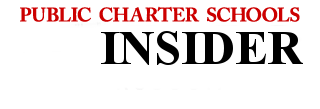Best Charter Schools
For years US educational system has been divided into two different categories. First, there was the traditional classroom setting, which seems to be around since the founding of our nation. Students were grouped together by age into a standard environment and taught a set curriculum that they would advance through each year. For those who weren’t satisfied with standard approach, the alternative was more expensive private schooling, which usually offered another variation on traditonal classroom teaching. Often in these settings students were taught to use the same general methods with a slight variation of curriculum, classroom sizes, or methodologies.
Now there is a third option for students, the charter school. These schools were designed to teach those students that fell in between the cracks of public and private school methods. They have proven to be very effective because they allow more flexibility and freedom in the classroom setting and are more inclined to adapt to the need of the student rather than stick to a defined set of regulations that must be met. While on paper charter schools seem like the solution to many problems in the field of education, not all of them are created equal. Some perform much better than others, so if you’re deciding which schools are better, it is best to base your decision on results rather than on the type of school it is. Below is a list of characteristics that some of the best charter schools will have and what you should look for.
Culture & Diversity
Culturally diverse schools usually are willing to incorporate the backgrounds of their students into the classroom environment. Schools that bring the local culture into the classroom, teach at a much deeper level than a standardized one-size-fits-all curriculum. Culture is an inbred quality and very personal so students can connect to their studies in a way that the traditional method may not always be able to do.
When diversity is used, students learn how to connect to more than just the words in their textbooks. They develop the ability to accept differences between them and embrace those differences.
Embrace Progress
Charter schools also work hard to keep up with the most up-to-date technology and teaching methods of the students. They do not focus on one method or teaching style but instead are willing to adapt and adjust with each student to ensure their success. As new methods of teaching are introduced they are willing to embrace them if it will help the student.
Concentration on Individual/Hands On Learning
Some of the best schools offer individualized training so that students can learn at their own pace. In addition, they give their students more hands on learning than the more traditional classroom. Students may be required to do internships in community service or be assigned mentors to guide them through an area of study that may seem to be more difficult for one student than it is for others.
Smaller Classroom Size
Smaller classes allow for students to get more individualized attention so that their individual needs can be met. Less crowded classrooms also make for a more comfortable study environment eliminating excessive input that the student may need to process.
Liberal Arts
A general liberal arts program gives students much more variety in their learning experience. Schools will often channel their academic studies to areas that are more in line with students’ personal goals or interests in life. For example, a school may teach their academic studies through a performing arts platform or gear everything towards a background in music or science. Other schools may concentrate on linguistic studies or the business industry.
One of the main reasons for the growing popularity of сharter schools is their ability to adapt to each student’s needs. These schools have to walk a fine line and keep an academic balance that sits right in between the public and private school environment. When analyzing which school is best, it is important to incorporate the needs of the student in question to determine its effectiveness and its overall success as a school.


 What is a Charter School?
What is a Charter School?